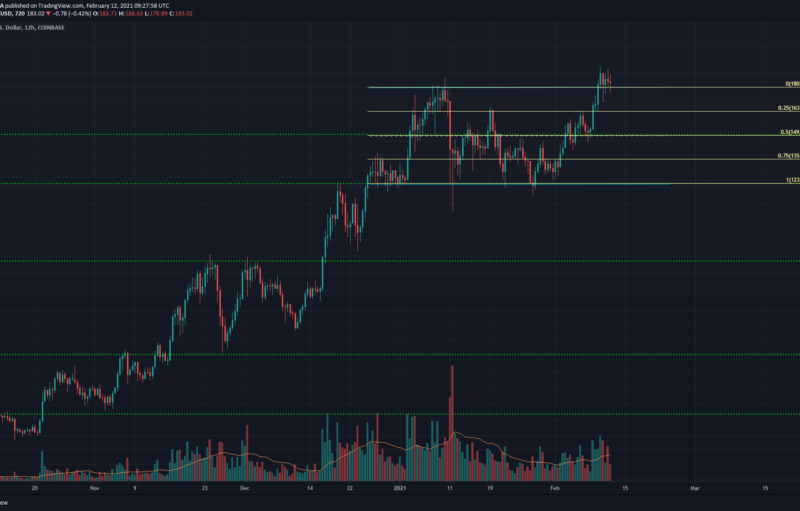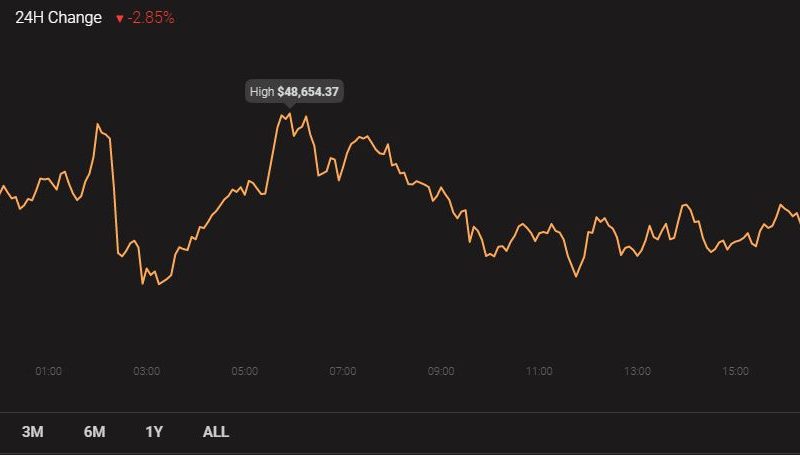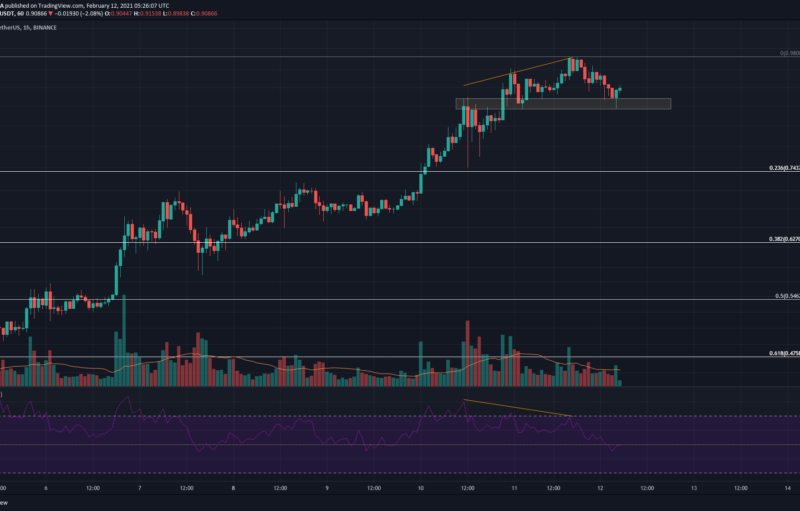
Central Banks across the globe are considering their own digital currencies to contend with unregulated cryptocurrencies such as Bitcoin. In reality, these are far from implementation.
The noticeable uptick in media attention toward Central Bank Digital Currencies (CBDCs) — especially after Zuckerberg’s testimony on Libra before Congress, and Christine Lagarde’s acknowledgment of the “clear demand” for stablecoins at her first press conference as head of the ECB — seems to have somewhat distorted the public’s perception of the state of play and left many in the crypto community thinking that CBDCs are just around the corner.
While central banks have been investigating the technology and considering its implications for the last seven years, according to the latest survey on CBDCs published by the Bank for International Settlements, 55 of the 63 central banks (around 85%) participating in the survey saw themselves as either somewhat or very unlikely to issue any type of CBDC in the following three years, and only one central bank reported that they see themselves as “very likely to issue a wholesale CBDC” in the following three to six years.
Even though the proportion of central banks that are currently — or soon to be — working on their own CBDC is significant (accounting for some 70% of the central banks surveyed) the crux of the matter is that the work is still mostly theoretical and investigative in nature. Only five central banks have progressed to more advanced stages and are developing or experimenting with actual pilot projects — which still doesn’t imply that they will necessarily issue a CBDC.
Upon closer inspection, however, it becomes increasingly apparent that both Facebook’s recent Libra announcement, and the new and emerging asset class of stablecoins that are (rather successfully) servicing the crypto markets have had quite a sobering effect on central bankers. The centuries-old status quo seems to have shifted in a matter of months; that which has never been thought of before, the scariest and the most foreign concept to ever infiltrate the elite societies of central bankers is now knocking at the front door — competition.
In terms of concrete solutions the state of play is uneventful, to say the least. Some familiar with the matter even go as far as to say that the whole thing is a bluff. However, “rushing slowly” — to use Ms. Lagarde’s own words — and the wait-and-see regulatory approach will no longer suffice, and central banks (and governments for that matter) should listen to Ms. Lagarde and “better be ahead of the curve,” or things might not turn out so well for them.
What is a Central Bank Digital Currency (CBDC)?
A CBDC is a new form of money, issued directly by a central bank in purely digital form and intended to serve as legal tender. Current forms of CB money are cash (comes in physical form and is accessible to the public at large) and reserve deposits or settlement balances (comes in digital form and is primarily available to banks and other financial institutions).
Two considerations are crucial in order to properly differentiate between the new form of CBDCs and other forms of digital money, including both cryptocurrencies and other legacy forms of central bank money. First, CBDCs have nothing to do with crypto-assets; they’re not decentralized, they’re not necessarily blockchain-based, and they will certainly not be anonymous, permissionless and censorship-resistant. Second, as opposed to the current digital money that has always been issued in the form of reserve deposits, CBDCs will (i) have a separate operational structure from other forms of CB money, and (ii) will have greater functionality — meaning, they can be programmable, can bear interest, can allow for near-instant settlement, and can be cheaper and more accessible to the broader public.
In terms of actual designs of CBDCs, things are moving at different speeds. Different central banks employ their own unique approaches, but in general, the three main questions being explored at the moment are (i) whether the CBDC should be token-based or account-based, (ii) should the CBDC be issued at wholesale (available only to banks) or retail (accessible directly to the public), and (iii) should they be based on DLT or not?
It’s when we consider their practical implementation that things get really messy, and the really tough questions become apparent. For instance, once CBDCs are rolled-out, should cash be abolished? Should CDBCs be interest-bearing? Should they have nominal value like regular cash or should they be indexed to an aggregate price index (e.g. Libra model)? How will this affect commercial banks? How should the issues of anonymity and privacy be handled? What about OpSec, interoperability, traceability, operational risks, incentive schemas? All of these questions are yet to be answered.
Motivations for issuing CBDCs
In a 2017 staff discussion paper titled “Central Bank Digital Currency: Motivations and Implications” the Bank of Canada gives the following six motivations for issuing a CBDC:
- Ensure adequate central bank money for the public and preserve central bank seigniorage revenue
- Reduce the lower bound on interest rates, and support unconventional monetary policy
- Reduce aggregate risk and improve financial stability
- Increase contestability in payments
- Promote financial inclusion
- Inhibit criminal activity
Looking back at the BIS survey we analyzed earlier, payment safety and domestic efficiency were selected as the most important motivating factors to central banks. As per the bulk of the available papers published by central banks and other large financial institutions, the paradigm shift to a cashless society seems to be the main driving factor for developed countries, while financial inclusion, reducing costs, and increasing operational efficiency are the main motivators for developing countries.
Examining the remaining reports and available literature, the fierce competition arising from Bitcoin and other innovators in the crypto industry, and the explicit need to “stay ahead of the curve” are, of course, nowhere listed as a reason for issuing CBDCs.
Risks and Advantages of CBDCs
If central banks start rolling out CBDCs and the experiment proves to be a success, the potential benefits are many. From a technological perspective, CBDCs are vastly superior to current forms of fiat currencies; they allow for better tracking, easier tax collection, better transmission of monetary policy, potentially greater financial inclusion, and reduced costs for production of physical money. The most obvious advantage is cheaper, faster, and more efficient domestic and cross-border payments.
Aside from the design dilemmas and the issues surrounding the practical implementation, the key concern regarding the issuance of a CBDC is the risk that CBDCs could facilitate bank runs. This, however, could only happen if banks guarantee the on-demand convertibility of bank deposits to CBDCs which, according to this Bank of England working paper, doesn’t have to be the case.
Facts on the Ground
How far are we from seeing a real CBDC on the market? It’s difficult to estimate but, for now, the whole situation can be summed up in one sentence — all talk and no action. If we put aside (as we should) the failed Ecuadorian Dinero electrónico, Tunisia’s E-Dinar, and Venezuela’s Petro, all we can account for is theoretical research, little practical experimentation, and announcements (which should at best be taken with a grain of salt) of issuing a working nation-state CBDC sometime in the future.
The most notable CBDC projects still in the works are Uruguay’s E-peso (which was successfully piloted in 2018), China’s DCEP (which supposedly is in the finishing stages of development and will launch “any time now”), Thailand’s wholesale CBDC project called “Project Inthanon,” Sweden’s E-krona project (still in investigative stage), Marshall Islands’ “SOV” (an innovative take at creating a better national digital currency), Turkey’s Digital Lira (scheduled to finish testing in 2020), and Singapore’s Project Ubin (a DLT-based CBDC currently undergoing industry testing, the project report will reportedly be published in early 2020).
Nowhere Near the Horizon
Taking these factors into consideration, the vast majority of juicy headlines for the soon-to-be launching CBDCs appear to be unsubstantiated. All of the projects scheduled for release by the end of this year were postponed.
In all reality, CBDCs are nowhere near the horizon, and it should take more than just statements to convince the public otherwise. Given the current facts, it seems unlikely CBDCs will challenge cryptocurrency — for now.
The post appeared first on CryptoBriefing






